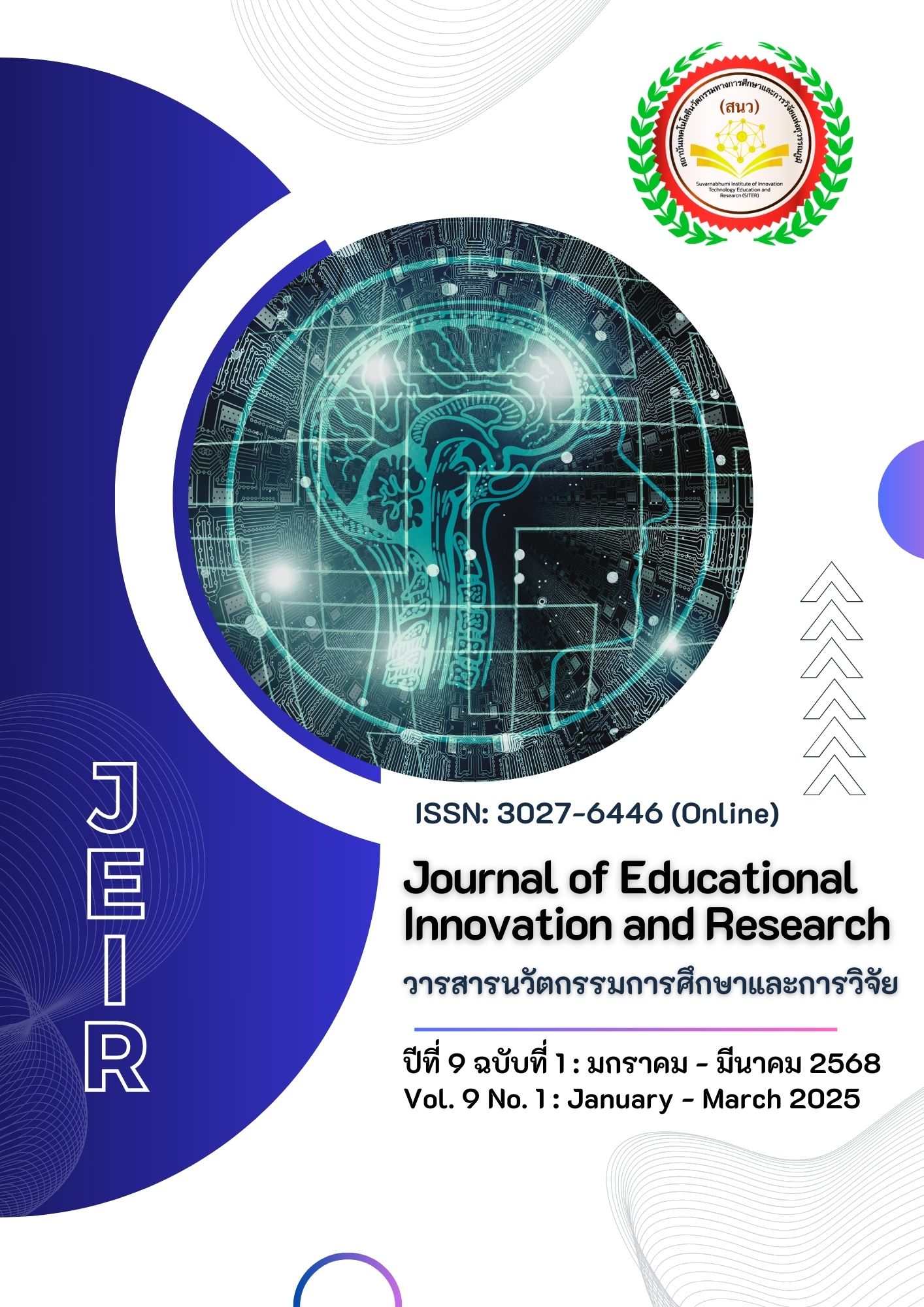Study Room of University under the Background of Characteristic Culture: Research on Interior Space Environment Design
Main Article Content
บทคัดย่อ
Ningxia, located in northwestern China, has a long history and is home to multiple ethnic groups, boasting a rich cultural heritage. With the development of modern education, effectively integrating and showcasing this multiculturalism in university study spaces, particularly at Northern Nationalities University, has become an important issue. The design of study rooms must not only meet functional requirements but also reflect and convey the cultural characteristics of the region.
This study employs literature reviews and field investigations to explore how to integrate the multicultural elements of Ningxia into the design of study rooms, ensuring that these designs meet modern educational needs while also showcasing the unique regional culture. The findings reveal that incorporating Ningxia's multicultural elements not only enriches the cultural atmosphere of the study rooms but also significantly enhances students' learning experiences and cultural identity. Furthermore, specific design techniques, such as optimizing spatial layouts and cleverly integrating cultural elements, can effectively promote communication and cooperation among students, enhancing the functionality and aesthetics of the learning environment.
The study’s implications suggest that culturally inclusive design strategies can serve as a model for other universities, contributing to regional cultural preservation, inclusive education, and sustainable campus development.
Article Details

This work is licensed under a Creative Commons Attribution-NonCommercial-NoDerivatives 4.0 International License.
References
Cheng, L., Wang, Z., Cai, J., & Chen, J. (2019). Analysis of the design and innovation of university study rooms in Liaoning Province. Artist, (7), 1. https://doi.org/10.19892/j.cnki.csjz.2021.27.131
Cho, J. Y., & Suh, J. (2023). Spatial ability performance in interior design and architecture: Comparison of static and virtual reality modes. Buildings(12). https://orcid.org/0000-0003-2494-913
Daghistani, F. (2023). Conceptual design and performance evaluation of an air-cushion floating purifier (ACFP) for improving air quality in semi-confined spaces. Energy and Buildings, 109297. https://doi.org/10.1016/j.enbuild.2023.113672
He, W., & Gao, X. (2023). Optimization design of indoor interaction space for elderly universities based on SD method: A case study of Jinan Elderly University. Journal of Shandong Jianzhu University, 38(6), 112-122. https://doi.org/CNKI:SUN:CHSO.0.2001-04-012
Li, Q. (2022). Application research on the integration of regional culture in the landscape design of Ningxia Zhongwei tourism resort area [Master's thesis, Xi'an University of Architecture and Technology].
Li, B. (2009). Ningxia culture and cultural development. Ningxia Social Sciences, (6), 119–122.
Liu, A. (2010). Behavior-based design: Reflections on the environmental design of outdoor spaces in university campuses. Literature and Art Forum, (10X), 172–173.
Ting, G., & Peng, F. (2024). A brief analysis of shared study room design methods under the concept of human-centered design. Architectural Design and Application, 2(1), 17–19.
Sun, L., Li, X., & Nie, R. (2015). Investigation on the use of university study rooms: Taking various universities in Shandong as an example. Chinese Information, (005), 127-127, 32. https://doi.org/10.3969/j.issn.1003-9082.2015.05.105
Sun, X. (2021). Research on the design of study room space under the concept of "shared desk". Industrial Design, (10), 106-107. https://doi.org/10.3969/j.issn.1672-7053.2021.10.054
Wang, C. (2022). Research on the cultural symbols of Ningxia from the perspective of forging a strong sense of community for the Chinese nation [Master's thesis, Northern University for Nationalities].
Wang, J., & Zhou, H. (2022). Research on Ningxia cultural tourism IP image design. Art Literature, (11), 122-124. https://doi.org/10.16585/j.cnki.mswx.2022.11.031
Wang, H. (2008). Analysis of interior space environment design. Journal of Anhui Water Resources and Hydropower Vocational and Technical College, 8(1), 51–52.
Yang, H., Luo, X., Chen, B., Xie, H., Huang, L., Shi, Q., & Ni, M. (2024). A numerical investigation on indoor air ventilation design and aerosol transportation: A case study in a hospital hall. Simulation, (2), 113-125. https://doi.org/CNKI:SUN:MYLM.0.2005-04-325.
Yuan, X., & Feng, H. (2009). Interior space design of information-sharing spaces: On functional transformation and layout of electronic reading rooms. Library Journal, (6), 53–55.
Zheng, Y., & Li, J. (2009). Influence of behavior patterns on interior space design of college student apartments. Shanxi Architecture, 35(11), 8–9.

